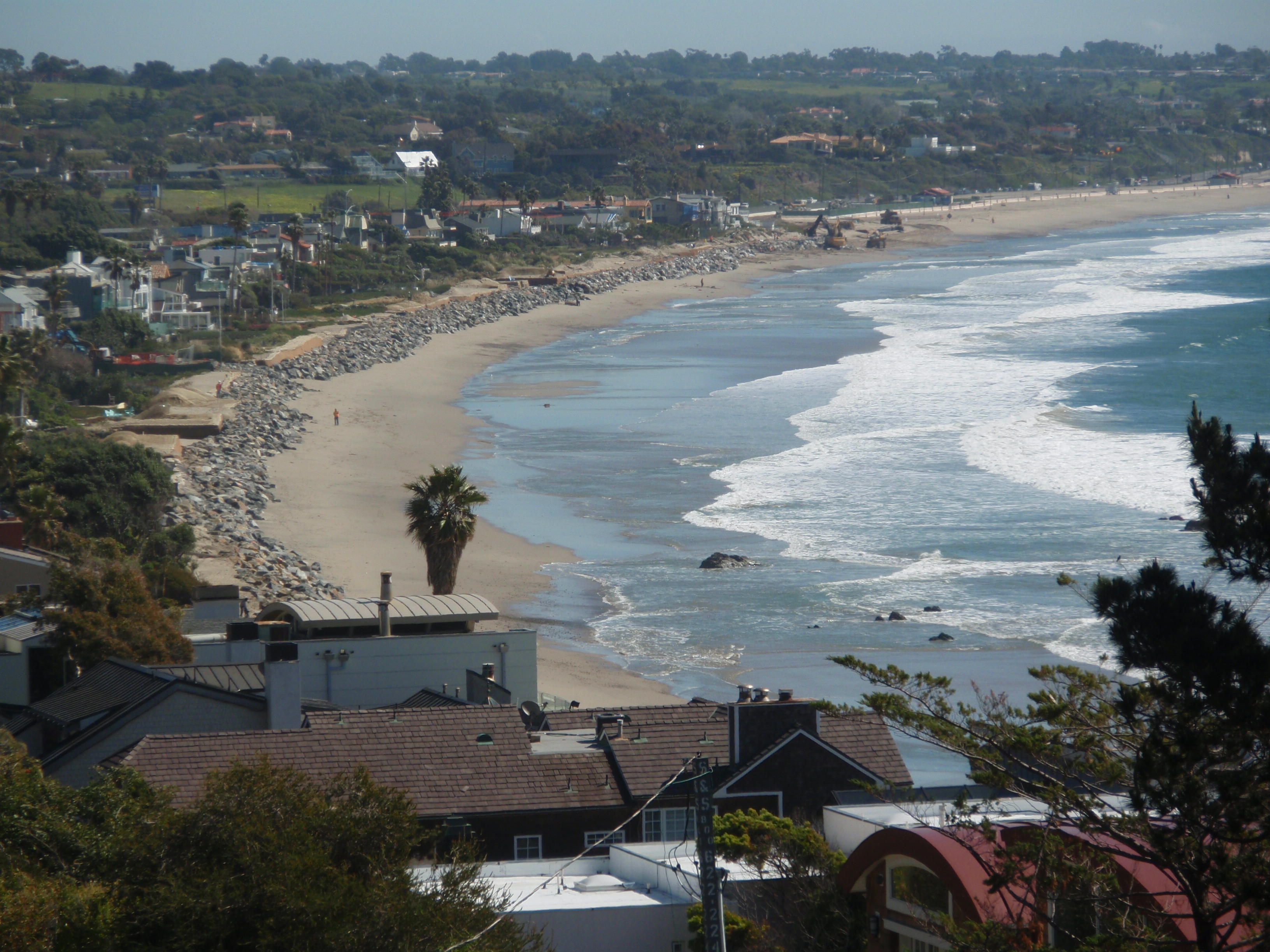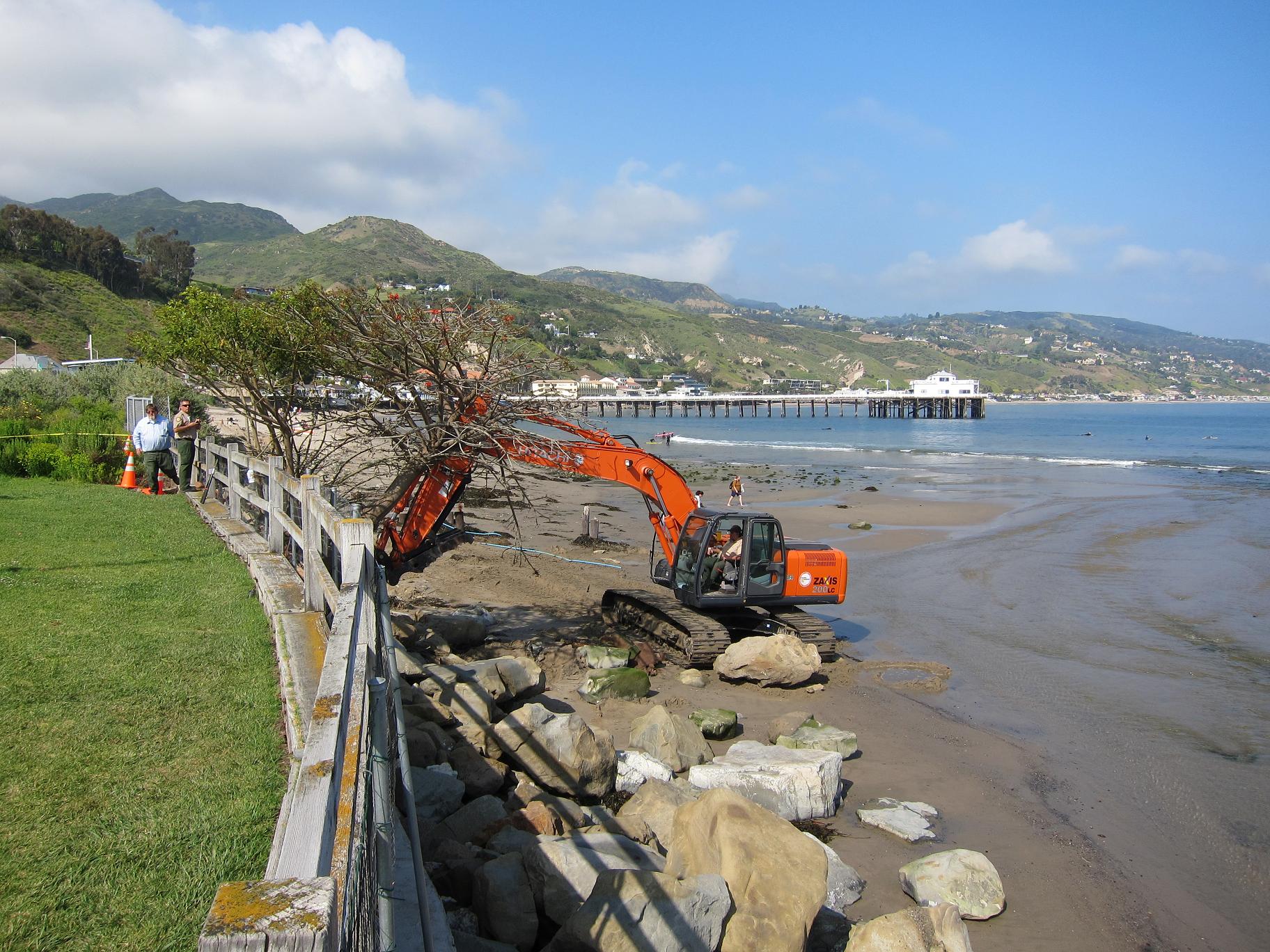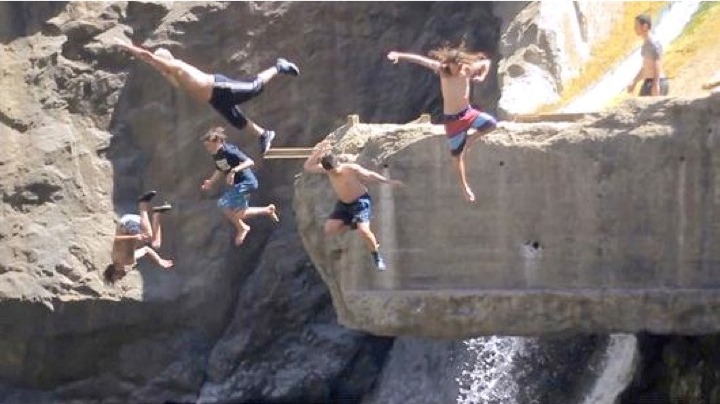Want to stay up to date on the project and receive periodic email updates? Visit https://restoremalibucreek.org/subscribe

The California Department of Parks and Recreation (State Parks) is beginning the Pre-construction, Engineering, and Design (PED) phase of the Malibu Creek Ecosystem Restoration Project, located within Malibu Creek State Park in the Santa Monica Mountains, Los Angeles County. State Parks, along with a team of consultants and partners from McMillen, LLC, Stillwater Sciences, California Trout (CalTrout) and others will conduct baseline biological surveys, hydrology/hydraulic modeling and flood risk assessment, engineering plans, environmental permitting, public outreach, and other project studies to advance the project to a 90% level of design.
The project involves the removal of the decommissioned Rindge Dam along Malibu Creek, removal of approximately 780,000 cubic yards of sediment behind the dam, and modification/removal of eight upstream barriers along Las Virgenes and Cold Creeks within the Malibu Creek watershed. When completed the project will restore creek ecosystem functions and increase habitat connectivity, including opening 15 additional miles of stream habitat for the endangered southern California steelhead (Oncorhynchus mykiss), improve climate resiliency, and restore natural sediment transport processes that will nourish our beaches with vital sand. The project will also improve public safety by removing the obsolete dam where serious injuries and fatalities have occurred from park visitors jumping off the dam’s spillway.
The project began in 1992 when the U.S. House of Representatives commissioned the Malibu Creek Ecosystem Restoration Feasibility Study to improve the Malibu Creek watershed and Malibu shoreline. The U.S. Army Corps of Engineers (USACE) and State Parks co-led a dam removal alternatives study, with participation from federal, tribal, state, and local partners and neighboring communities. In November 2020, USACE and State Parks completed a joint Integrated Feasibility Report (IFR) with Environmental Impact Statement/Environmental Impact Report (EIS/EIR) outlining project impacts, alternatives, and a preferred project. From the alternatives presented, State Parks selected the Locally Preferred Project (LLP) alternative, favored by countless participating groups, to proceed to the PED phase.
For detailed information on the project, including alternatives considered, see the IFR with EIS/EIR link to the right.
A public workshop was held June 13, 2023. A summary document along with a video of the workshop will be available shortly. Future public workshops will also be held as the project moves towards 90% design completion. Public and student education and community outreach programs for all ages are also planned to teach more about ecosystem restoration as well as the cultural legacy that encompasses the traditional lands of the Pipimaram (Fernandeño Tataviam), mitsqanaq’n (Ventureño Chumash) and Tongva (Gabrielino) people.
For questions or volunteer opportunities, email restoremalibucreek@parks.ca.gov
For a list of events, visit https://restoremalibucreek.org/events
To sign-up for project updates, visit https://restoremalibucreek.org/subscribe
The Malibu Creek Ecosystem Restoration Project has many benefits to local wildlife, beaches, and public safety.


Southern steelhead trout (left) have access to only three miles of their 60+ miles of historic habitat in Malibu Creek watershed. Habitat for western pond turtle (right) and other species has been severely impacted. (Photos courtesy of CalTrout and the Resource Conservation District of the Santa Monica Mountains)
Reconnecting Natural Waterways and Protecting Wildlife Corridors and Habitat
Waterways are the life-blood of natural ecosystems. The removal of in-stream barriers would reconnect the Malibu Creek corridor and restore creek, lagoon, and beach habitat benefitting sensitive aquatic animals such as the endangered southern California steelhead trout, and protect animal movement corridors. By restoring Malibu Creek’s natural hydrology, the project would protect the rare biological diversity present, and improve the related aesthetic, recreational and economic values.
Additionally, Malibu Creek is a key wildlife linkage within the Santa Monica Mountains. Other important species use Malibu Creek for habitat and wildlife movement corridors. These include the least Bell’s vireo, western pond turtle, California red-legged frog, two-striped garter snake, Pacific tree frog, and mountain lion, among others.

Visualization of the dam removed. Topography of the area behind the dam is currently artificially elevated 100 feet above the natural grade.
Roughly 780,000 cubic yards of material are trapped behind the dam, material that otherwise would move downstream to replenish beaches and surf breaks. (Courtesy California State Parks, 2016).
Sediment for Beaches and the Surf
Dams block natural sediment (sand, silt, cobble) from moving downstream. Removing man-made barriers restores this natural cycle for beaches and nearshore habitats, and maximizes local reuse of sediments trapped behind the dam.
An estimated 780,000 cubic yards of sediment is trapped behind the dam, resulting in unnatural creek morphology extending almost one mile upstream behind the dam. The harm on areas downstream of the dam extends three miles to the beach and beyond. The natural sediment cycle of boulders, cobble, and ultimately sand and silt moving downstream and onto area beaches and surf zones, has been blocked.
Sediment starved beaches are shrinking as sand is carried away by surf and not replenished. This reduces natural barriers and protections for beachfront properties such as the historic Adamson House. The retreating sand requires costly artificial barriers, seawalls and repairs to protect beachfront property.
Surfrider Beach, in particular, has been designated as a Beach Erosion Concern Area (BECA, 2010) for its lack of width/elevation to serve recreational demand and protect upland facilities. There are three simultaneous surf breaks at the world-famous Surfrider Beach, which receives an estimated 2.5 million visitors per year. Cobble, sand and other material washing downstream from Malibu Creek to form underwater bars are key to the area’s surf and the recreation it provides.
Removal of Rindge Dam would restore a more natural sediment cycle in the lower Malibu Creek watershed. Natural sediment flow benefits beaches, surf, and offshore environments, as well as the associated regional economy.


Eroding beach at Broad Beach (left) and repairing storm damage at the historic Adamson House (right) at the Surfrider Beach, 2012. Surfrider Beach, in particular, has been designated as a Beach Erosion Concern Area (BECA, 2010) for its lack of width/elevation to serve recreational demand and protect upland facilities. (Courtesy California State Parks, 2016)
Improve Public Safety
The dam is an attractive nuisance for those who seek to jump from, climb on, or vandalize the dam. Despite the area being posted off-limits - enforceable by fines - and patrolled, thrill seekers still find their way to the dam. There is concern from responsible agencies about the recent rise in unsafe activities at the dam site.
In recent years there have been a number of serious injuries and fatalities associated with this dangerous behavior at the dam. This also results in rescue operations that are dangerous for first responders and costly for local agencies. Human activities in the area of the dam also create environmental damage including illegal trails and discarded trash and waste.

Recreational divers at Rindge Dam pose a significant safety concern. Photos courtesy of Jeff Edwards, Otis College of Art and Design, Los Angeles (left).
